Plant Profiles dive deep on one plant variety. They are meant to provide you with enough information to make good growing decisions. A desire to grow gorgeous flowers is one thing. However, discerning if a particular plant is right for you and your climate is a whole other ballgame.
My intention here is to give you as much practical information to make these decisions. However, I’m going one step further and taking you completely behind the scenes to share exactly what has worked for us as well. For this reason, Plant Profiles are broken up into what I’m calling the “Nuts and Bolts (N&B)” and “Behind the Scenes (BTS).”
If you haven’t already, please be sure to read the FFY Introduction to learn more about how Plant Profiles are organized.
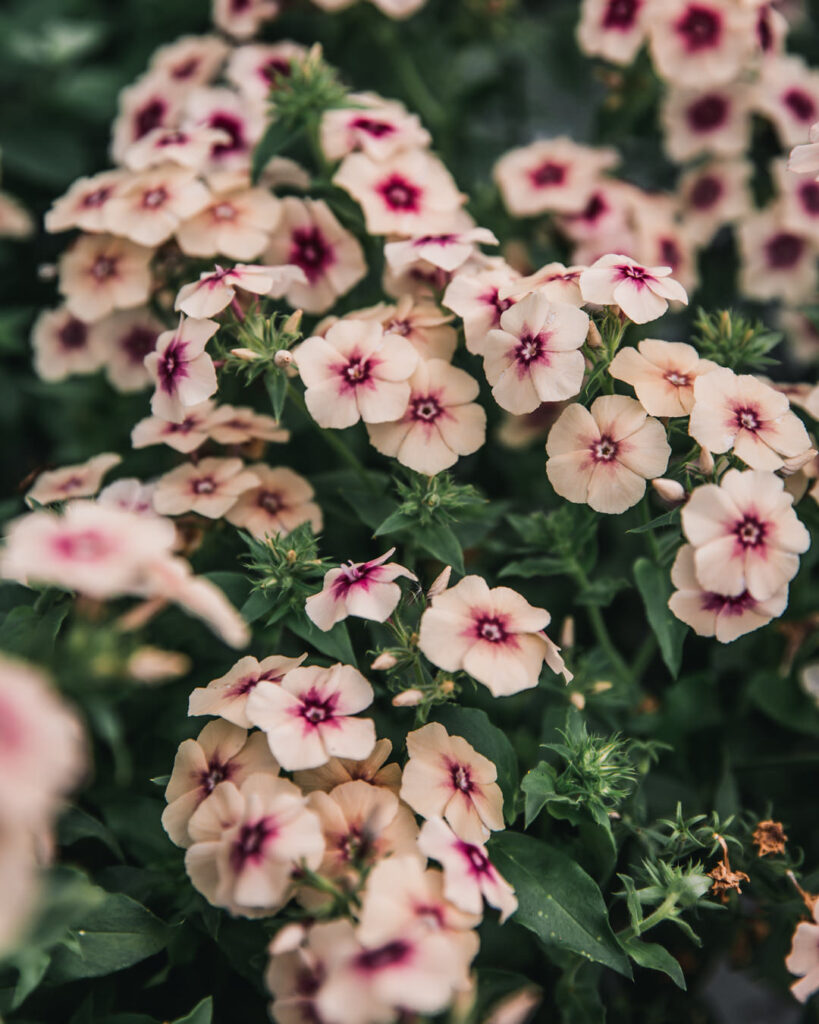
Primary Sources
The primary sources for the N&B portion come from:
- Postharvest Handling of Cut Flowers and Greens: A Practical Guide for Commercial Growers, Wholesalers & Retailers (Dole, Stamps, Carlson, et al).
- Johnny’s Selected Seeds (Johnny’s): Johnny’s has been in the business for 50 years, with a research farm dedicated to finding the best seeds and tools for farmers and gardeners
- BOSTON Ornamental Terminal Prices. Specialty Crops Market News Federal – State Market News Service, USDA (as of 14-FEB-2023
- GrowerFacts. Phlox drummondii. Ball Horticultural Company.
- Missouri Botanical Garden. Phlox drummondii. missouribotanicalgarden.org
- Phlox drummondii Fact Sheet FPS-475 (Gilman, Howe). University of Florida Cooperative Extension Service Institute of Food and Agricultural Services
Zone Considerations
- Johnny’s Selected Seeds research farm is located in Zone 5a Maine
- My farm, Petal Back Farm, is located in Zone 4b Wisconsin
General Information: N&B
Latin Name Name: Phlox drummondii
Common Name: Annual Phlox
Origin: Texas
Days to Maturity: 50–65 days
Life Cycle: Annual
Spacing: 6–12″
Height: 6–30″
For this plant profile, we are focusing specifically on Phlox drummondii, or annual phlox. Annual phlox is native to grasslands and open woods in central and eastern Texas (University of Florida). The small, single flowers appear in shades of red, lavender, and white, sometimes bi-colored, and are produced in abundant clustered heads. Some cultivars have small, star-shaped flowers, often edged in white with a contrasting eye. Specific epithet honors Thomas Drummond (1790-1835) who collected plants in Texas and sent seeds from Texas to England (Missouri Botanical Gardens).
The popular wildflower has been bred and cultivated for cut flower production in gorgeous pastel and antique palettes. It has also escaped gardens and naturalized along roads, fields, and waste areas in many parts of the U.S.
While annual phlox, as the name suggests, is treated as an annual in cut-flower production, it is a generous self seeder and volunteers will no doubt pop up in subsequent seasons. There are also numerous varieties of perennial phlox.
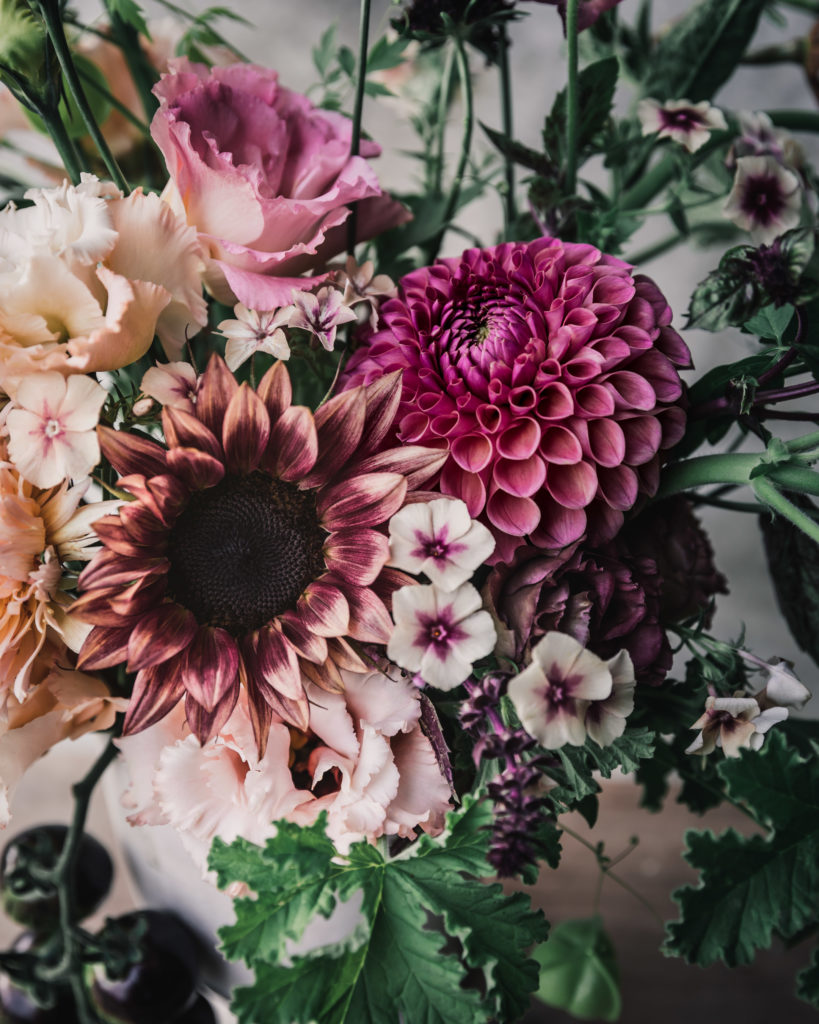
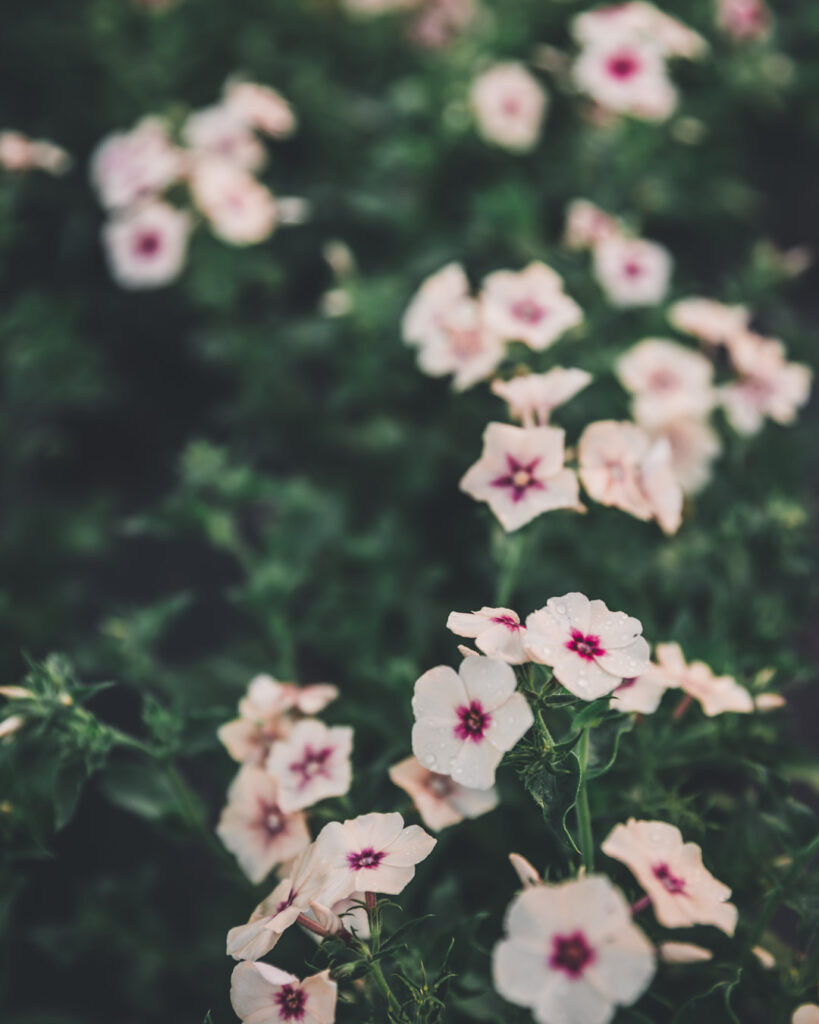
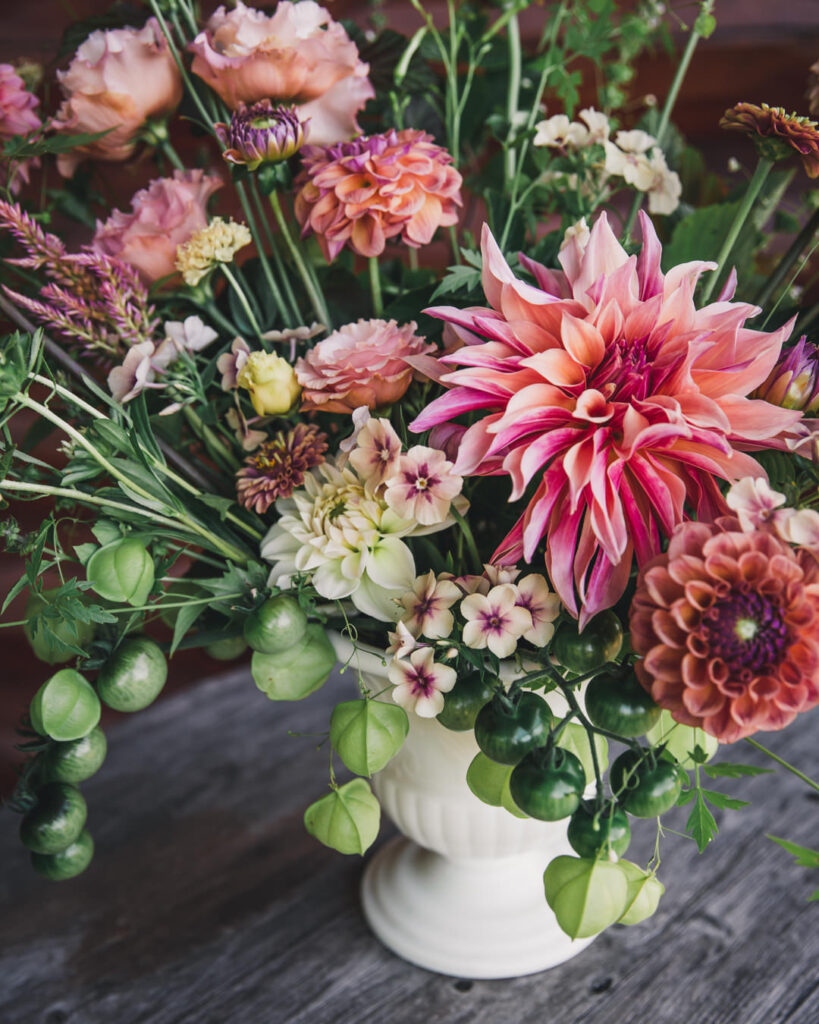
General Information: BTS
While phlox has it’s challenges, it’s an absolute must-grow for garden style design. There, I sad it.
Surprisingly, though, annual phlox is missing from a lot of the conventional cut flower literature. However, it’s often cited as a favorite among flower farmers and designers. I can only attribute this to annual phlox not being a traditionally-shipped cut flower, and that it’s popularity has gained momentum with the local flowers movement.
But also, phlox is a weird plant when it comes to it’s growth habit. At first it’s completely wimpy and underwhelming, and I think that’s why most people give up on it. If you’ve ever given up on phlox, I encourage you to give it another try after reading this. Phlox can totally surprise you with a few tips and tricks. While there is limited literature, I gathered what I could find and am sharing my own personal experience for this garden treasure.
While harvesting phlox is not my favorite, I just love it’s whimsical vibe in arrangements (and my gosh, that fragrance). Why are so many of the garden-style design favorites such a pain to harvest though?! Although it’s stems are tedious to harvest and clean (and sticky!), they are so easy to weave into arrangements and bouquets. Because they are more fragile, they are usually only found locally, giving farmer-florists an edge on the market.
Phlox is easy to grow, abundant, pest and disease resistant, and extremely quick to flower! The biggest complaints I hear about phlox, aside from harvesting, are stem length and poor germination. As usual, there are some tricks for both of these issues. When it comes to annual phlox, not all varieties are created equal, and there is one major cultural trick to getting decent stem length. There is also one key element to better germination. We’ll discuss all of it in this plant profile!
What I love most about phlox as a cut flower:
- Easy to grow
- Fast to flower
- Colors, I especially love the antique and pastel hues
- Whimsical stems
- Fabulous for design (especially garden style)
- Fragrant
- Extremely prolific
- Attracts pollinators
- Pest/disease resistant
But every rose has its thorn, right? Potential shortcomings:
- Tedious to harvest
- Shorter stems (but some varieties are more-than adequate)
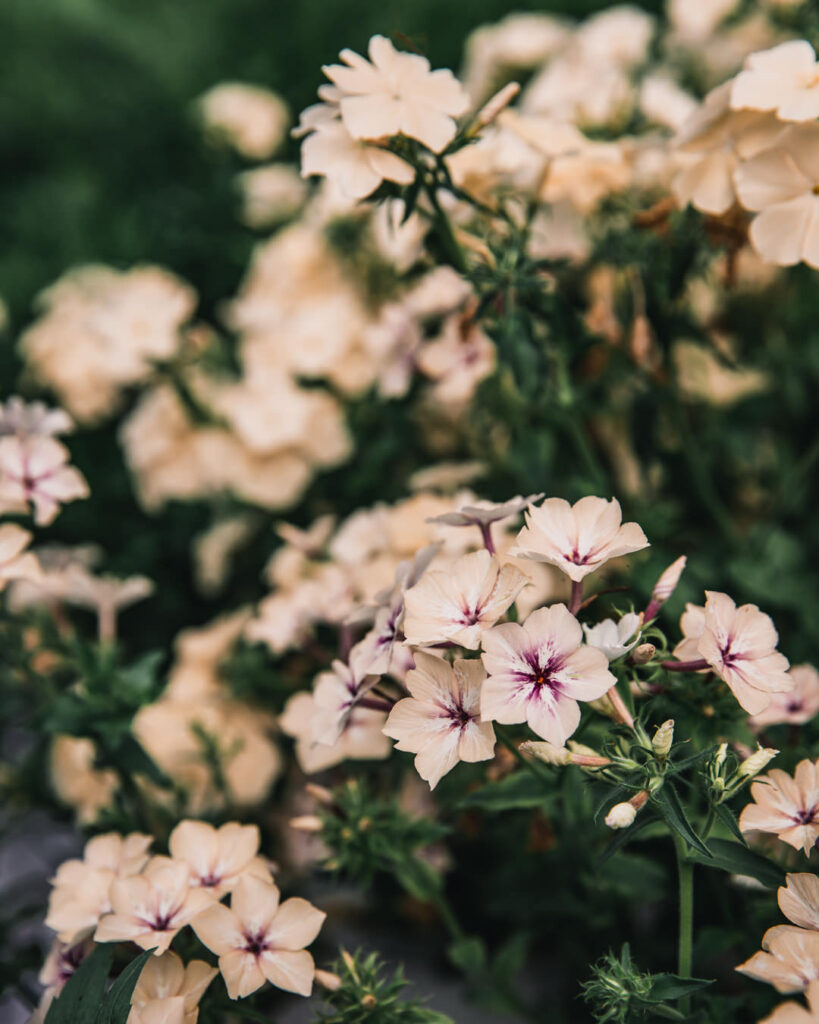
Propagation: N&B
Johnny’s recommends direct sowing. If transplanting, sow 4–6 weeks before last frost, directly into final container or jumbo plug trays, as phlox dislikes root disturbance. Phlox germinates in 5-10 days at 60-65F (16-18C). Cover seed, as darkness is required for germination. Carefully transplant outdoors when first true leaves appear.
Propagation: BTS
If you’ve ever struggled with phlox germination, there is one key element. Did you catch it above? Darkness. And I mean total darkness. While many flowers actually need light to germinate, phlox requires darkness. Cover well with vermiculite, and don’t set those trays under direct light until after most have germinated. You can also put them in a dark area or cover the tray with another tray (just be sure to check frequently).
I’ve always grown our phlox in 72-cell trays. I would say I’ve never been super impressed with my phlox seedlings, so perhaps I need a bigger tray, but I’m fairly certain they just aren’t all that impressive as seedlings. This is where I think people give up on them. They kind of just look wimpy. And then they flower, like at seedling stage, which totally freaked me out at first, thinking they were stunted.
However, this is totally normal, and pinching them is the biggest trick to stem length! Don’t worry if your seedlings seem unimpressive or start to flower. Pinch those flowers right off (i.e., cut them back above a few leaf nodes). You may have to do this again a before you transplant them and certainly after. I find I need to pinch my phlox multiple times before I get any useable stems. But once those babies establish, geesh do they take off!
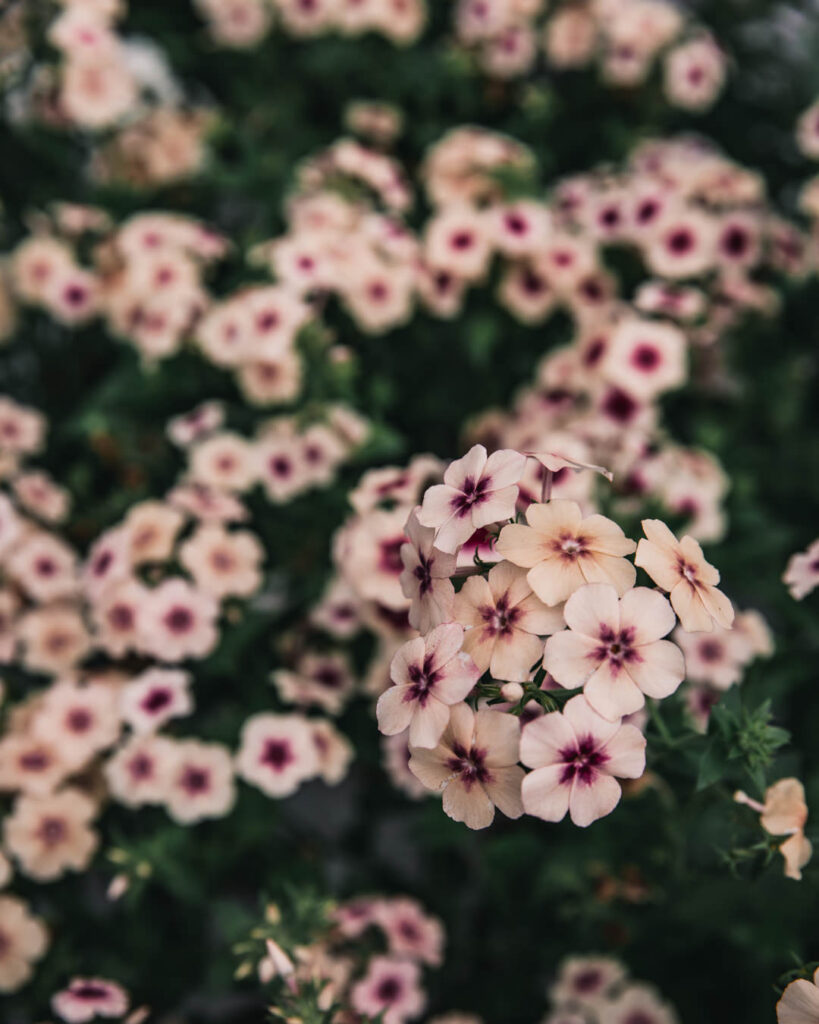

Environmental Factors: N&B
In areas with mild summer, phlox will bloom from early summer until frost, especially if faded flowers are removed. Flowering will decline during the hottest months of the summer, but plants will flower prolifically again if left until the weather cools. Best grown in loose, acidic, well-drained soils in full sun to part shade (Missouri Botanical Garden). While Johnny’s recommends consistent moisture, they also note that phlox does well in sandy soils.
Environmental Factors: BTS
Despite preferring the cooler weather of spring and fall, phlox still reliably flowers for us even in the heat of summer. We have very sandy soil on the farm. We plant them in full sun, both in the field and in the high tunnel.
Transplanting, Spacing, Support: N&B
Transplant phlox outdoors after last frost and once plants have hardened off, 6–12″ apart. Some sources say that phlox can handle cool weather, while others say to wait to plant until after danger of frost. Unless your phlox is extra tall (lucky you), most growers are fine without support, though support can help create straighter stems.
Transplanting, Spacing, Support, Weed Control: BTS
I’ve always transplanted phlox after frost, so I cannot comment on it’s cold tolerance. Our springs can have some major fluctuations, so I really only plant out the toughest plants early. And while I love phlox, it gets a back seat to other spring tasks, so I usually don’t end up planting it until after frost even when I intend to push the limits on it🙂 I have always planted phlox at 9″ spacing, but I am going to attempt tighter spacing at 6″ in our high tunnel. I do not use netting on my phlox. I’ve previously used landscape fabric with burned holes at 9″ spacing for weed management, but I am going to try growing closer together without fabric for 2024. My hope is to use collinear hoes to remove weeds at early stages and that the plants will create a dense canopy to out-compete weeds later on.
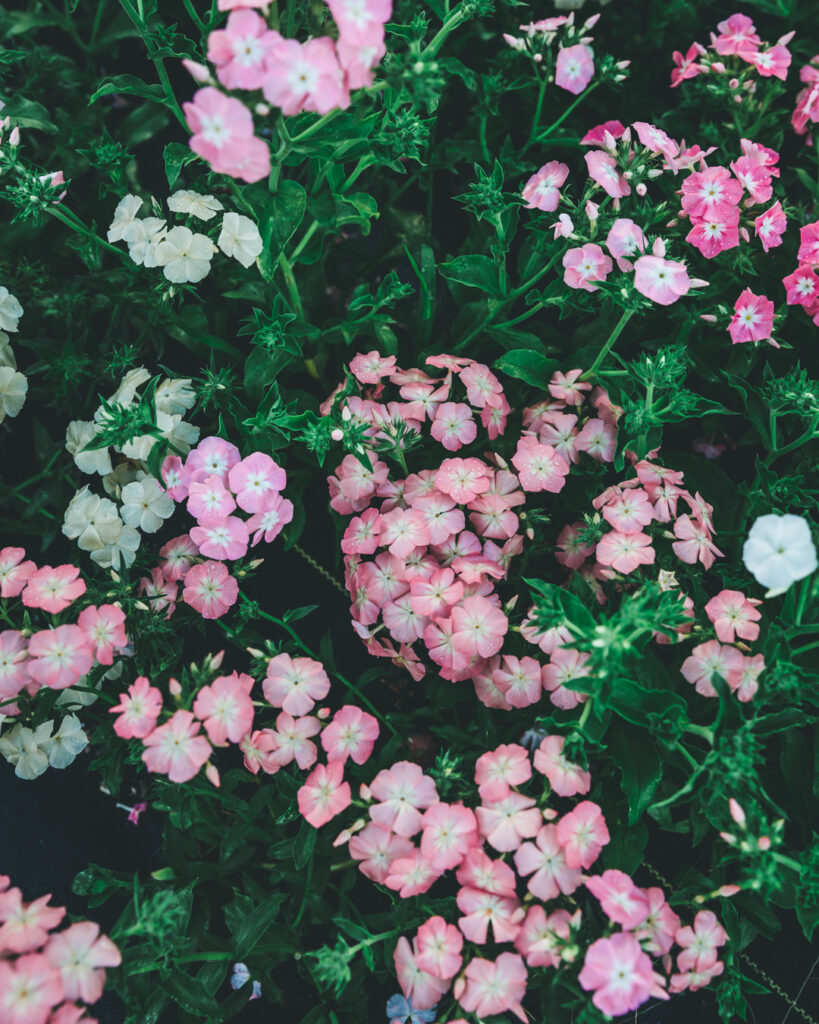
Successions: N&B
While phlox is a come-and-cut again flower, you may want a few successions to ensure a steady supply between cuts, while plants are creating additional flushes.
Successions: BTS
I usually do a couple successions of phlox.
Nutrition: N&B
The data is fairly limited on optimum nutrition. Most sources recommend fertile soil, so a top dressing of high-quality compost would be beneficial. A Ball Grower Fact Sheet for Phlox drummondii recommends fertilizing every other irrigation with 15-0-15 alternating with 20-10-20 at 150 to 200 ppm N.
Nutrition: BTS
We fertilize our fields organically based on soil tests, and we do not fertilize for each crop individually. I have an eBook that outlines exactly how we do this. I’ve made that available for you here.
Drainage & Irrigation: N&B
While phlox can tolerate dry conditions (this makes sense given it’s natural origin and wild habitat), all sources not that it benifits from even moisture.
Drainage & Irrigation: BTS
At our farm, we have gossil-loamy sand, meaning that our soil is more sand than loam. It actually drains excessively to the point of leaching nutrients. Our biggest difficulty is keep plants irrigated, especially in dry spells. For this reason, we do have drip irrigation installed on all of our beds at the home farm.
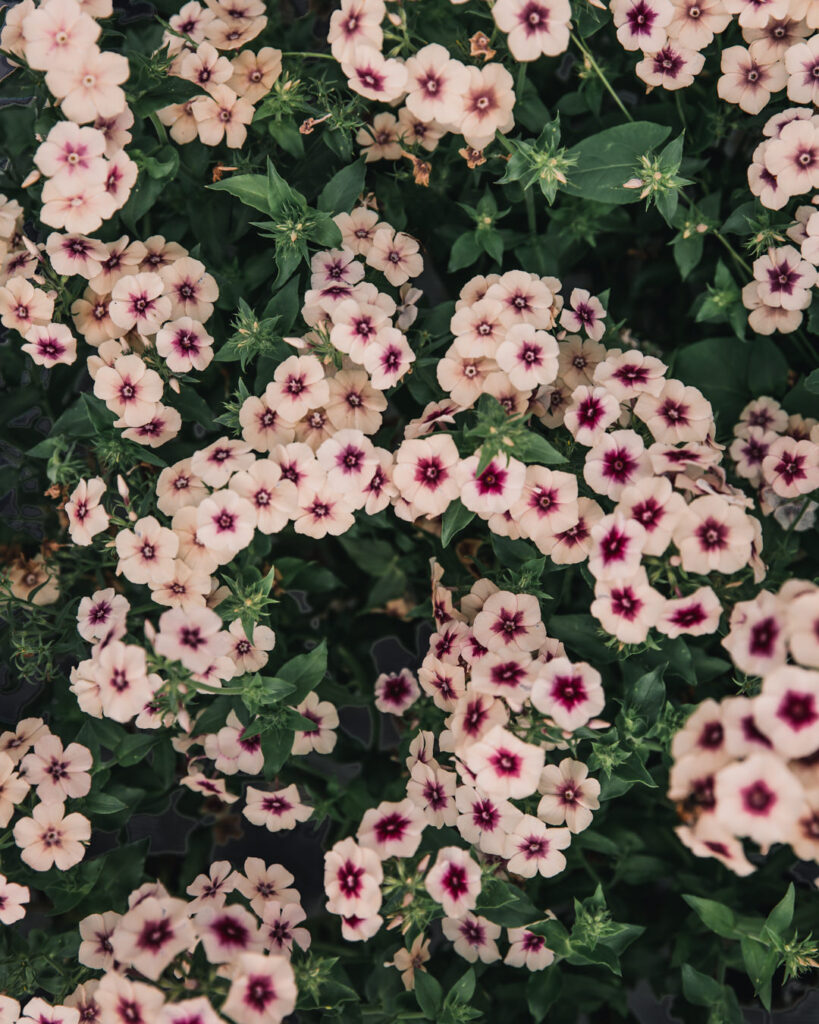
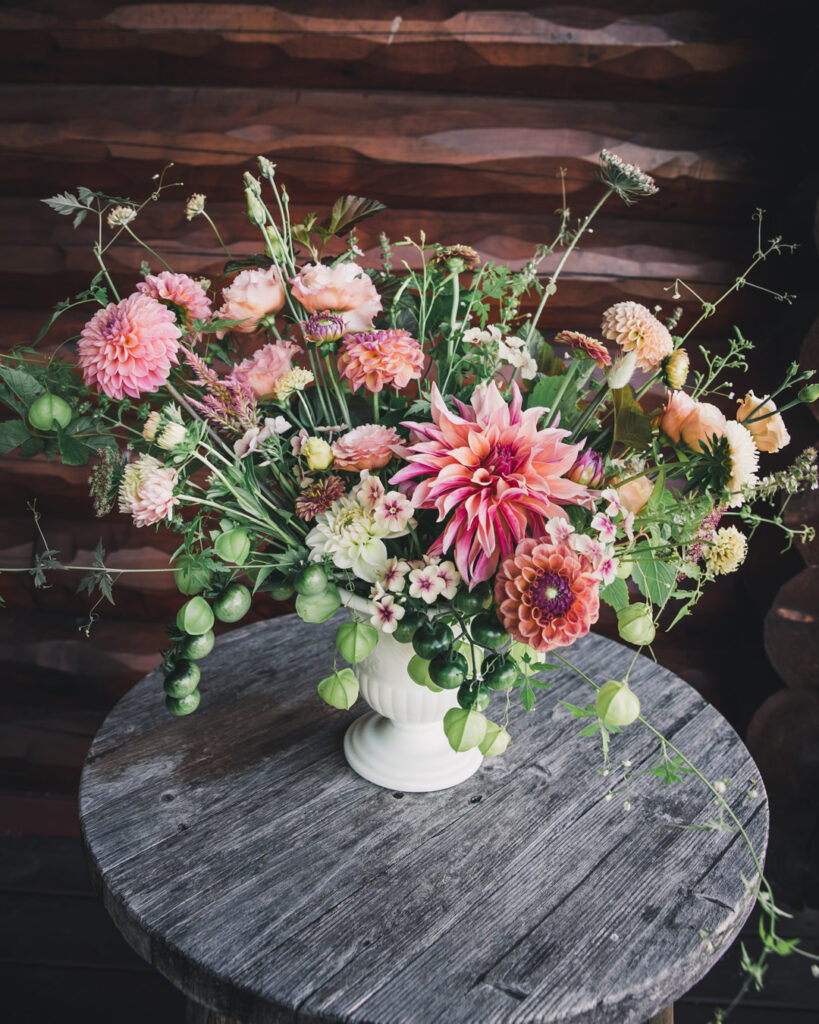
Pinching: N&B and BTS
To encourage longer, lateral stems, plants should absolutely be pinched. In fact, I normally need to pinch them multiple times, even ad seedling stage, in order to get useably stems (and because they flower so quickly). I think this is the biggest trick for long stems on phlox, just keep pinching those babies! It’s also important to deadhead expired blooms to keep plants producing throughout the season.
Bloom Period: N&B and BTS
According to Missouri Botanical Gardens, annual phlox blooms from April/May to early July. Plants decline significantly as the heat of summer sets in, but may revive in fall. In cool summer climates, plants will continue to bloom throughout summer. We find that our phlox will continue to bloom through the summer even in our extremely warm summers.
Overwintering: N&B and BTS
Annual phlox is not typically overwintered, but they can be generous re-seeders.
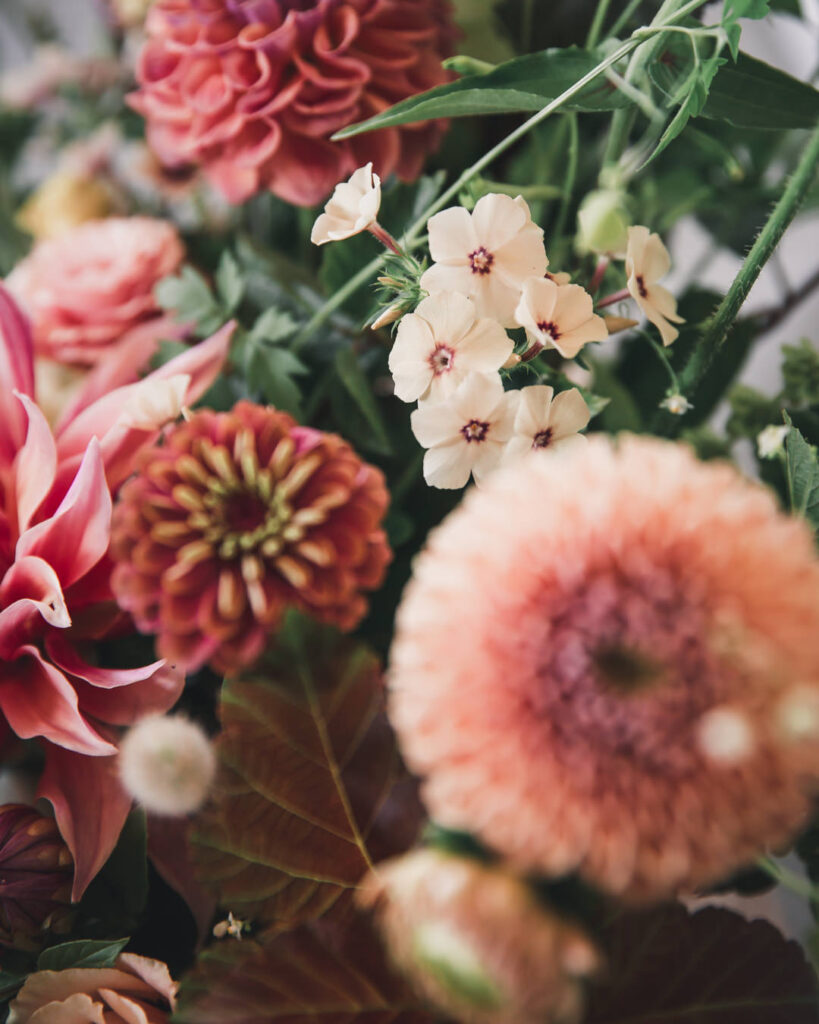
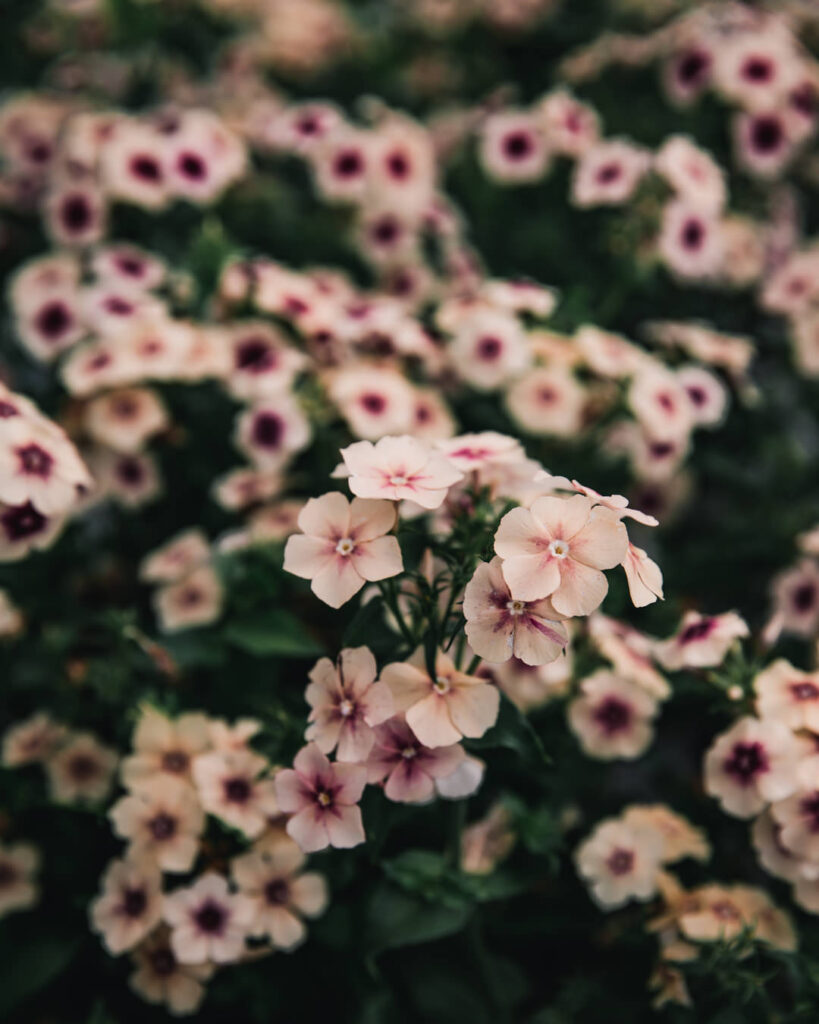
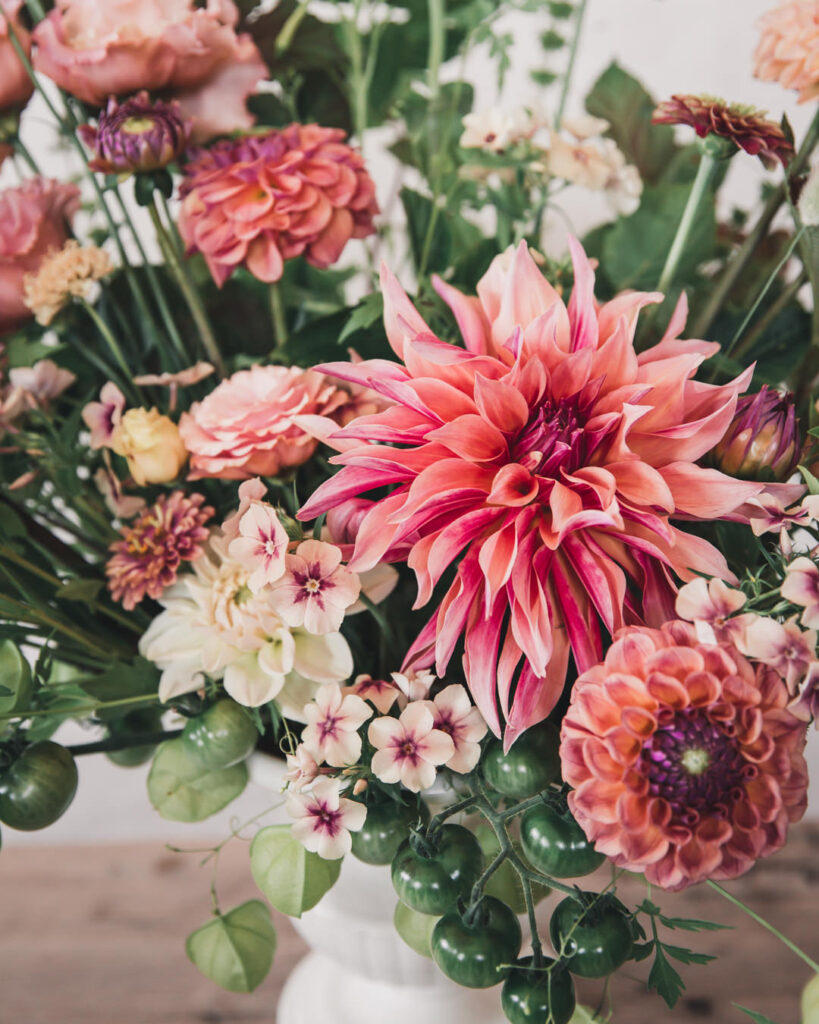
Harvest & Post-Harvest: N&B
For the best vase life, harvest when flowers are 50% open (Johnny’s). Cut deep to encourage more lateral side shoots. Strip any foliage that will fall below the water line.
Expected vase life is 5 to 7 days. While Postharvest Handling specifically write about perennial phlox, they note that a holding preservative is beneficial and that phlox can be held at 38F (3C) for 1 to 3 days.
Harvest & Post-Harvest: BTS
We harvest at the stage as recommended above, but I also find you can harvest annual phlox even earlier, when the petals are just beginning to open. I do cut phlox into a holding solution. We don’t store much longer than a day or two in our cooler (which is around 38F in late spring and summer).
Pests & Disease: N&B
While most sources state that phlox has no serious pest or disease issues, a few note that plants are susceptible to powdery mildew, particularly in humid conditions. If your area is prone to powdery mildew, plant farther apart to encourage airflow or apply an organic fungicide. Crown rot may occur in poorly drained soils (University of Florida; Missouri Botanical Garden). Missouri Botanical Garden also notes that spider mites can be an issue. For disease and pest control, see Johnny’s comparison chart.
Pests & Disease: BTS
We’ve never had any major issues with phlox.
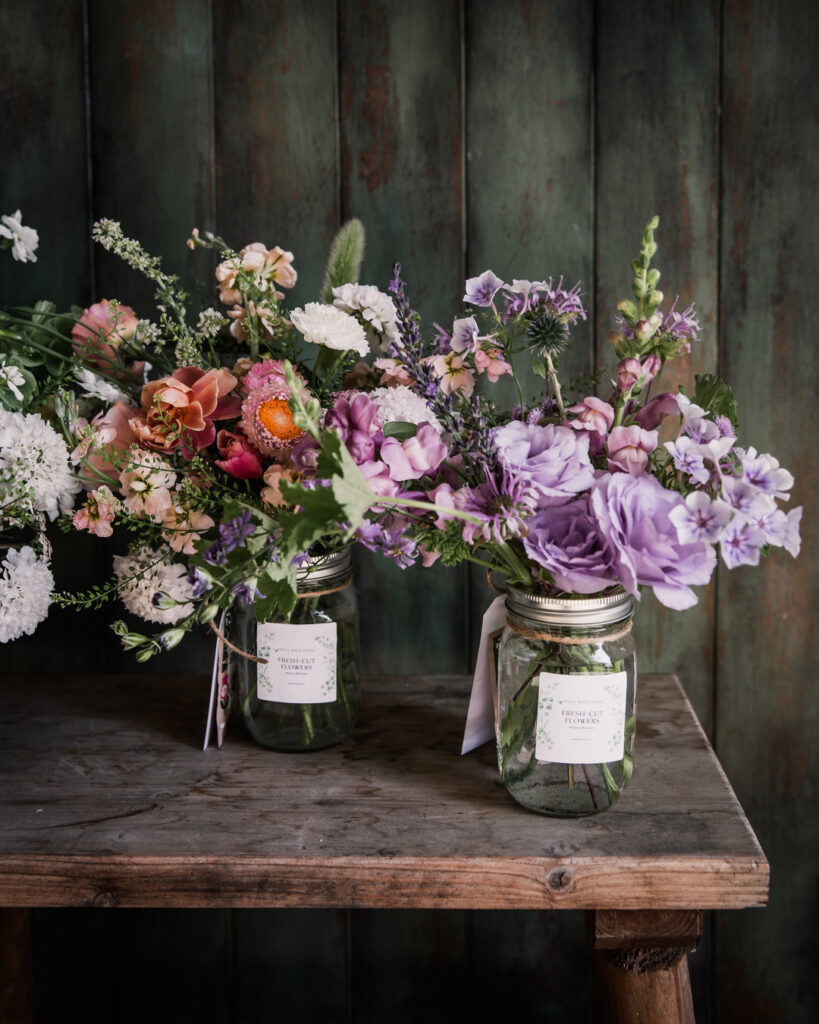
Variety Selection: N&B
Johnny’s, Floret, and Select Seeds have great catalogs for reviewing phlox varieties. Johnny’s states that they’ve selected and only offer phlox varieties with the tallest stems and most desirable colors from their trials. If you struggle with stem length, try Johnny’s and pinch those babies hard!
Variety Selection: BTS
On our farm, I have grown and loved:
- ‘Cherry Caramel’
- ‘Crème Brûlée’
- ‘Dulce de Leche’
- ‘Phlox of Sheep’
- ‘Sugar Stars’
If I had to choose only one phlox, it would be ‘Cherry Caramel’ for life! Or ‘Crème Brûlée’. Don’t make me choose.
Pricing: N&B and BTS
BOSTON Ornamental Terminal Prices as of 29-NOV-2023:
PHLOX: OFFERINGS LIGHT. per bunch long 12.50
$12.50–$15 is my florist price. I don’t typically sell phlox by the bunch for retail.
Design: N&B and BTS
I’m sure you are totally sick of me fan-girling over Gabriella Salazar’s work, but her use of phlox is just . . . chef’s kiss. I took her Heartfelt Floristry course, and she spoke so poetically of phlox while making this bouquet, and it completely reinvigorated my own deep love for phlox. While I don’t generally use it in market bouquets, I love it in bridal bouquets and arrangements (including retail mason jars). It’s so easy to weave into bouquets or arrangements and the spray flowers add such a soft pillow of dancing blooms. It’s a must for garden-style design. I especially love the antique colors of ‘Cherry Caramel’ and ‘Crème Brûlée’ because they pair so well with others, creating a perfect bridge.

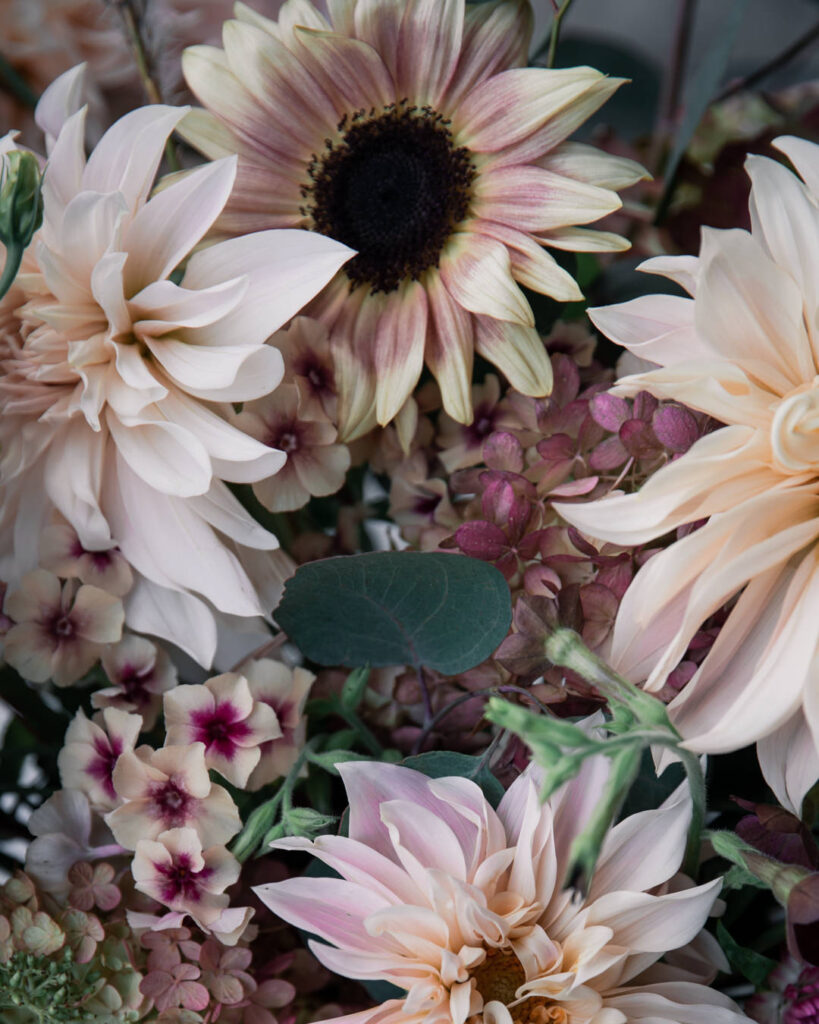
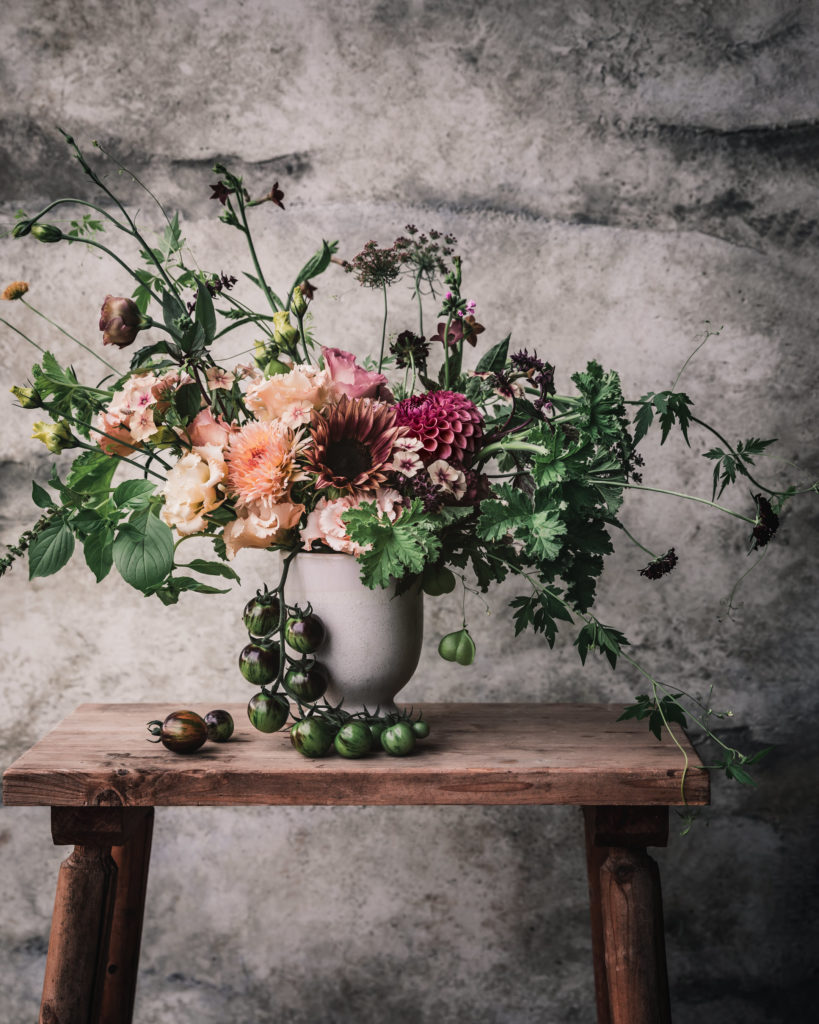

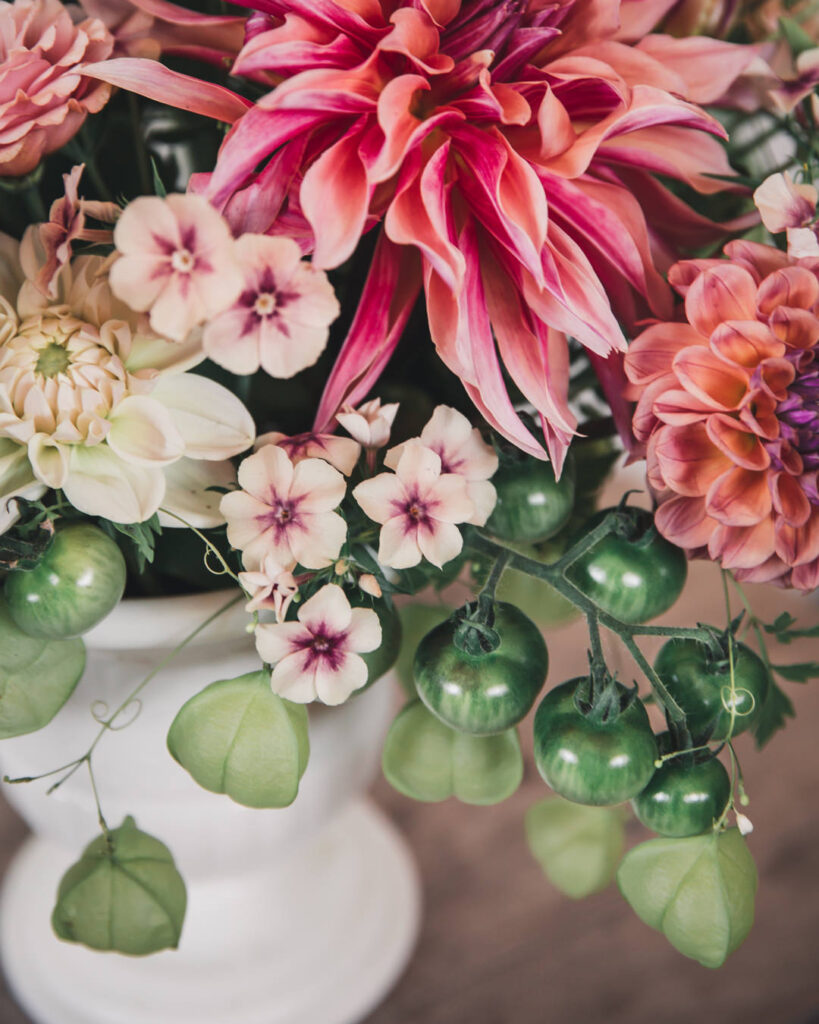
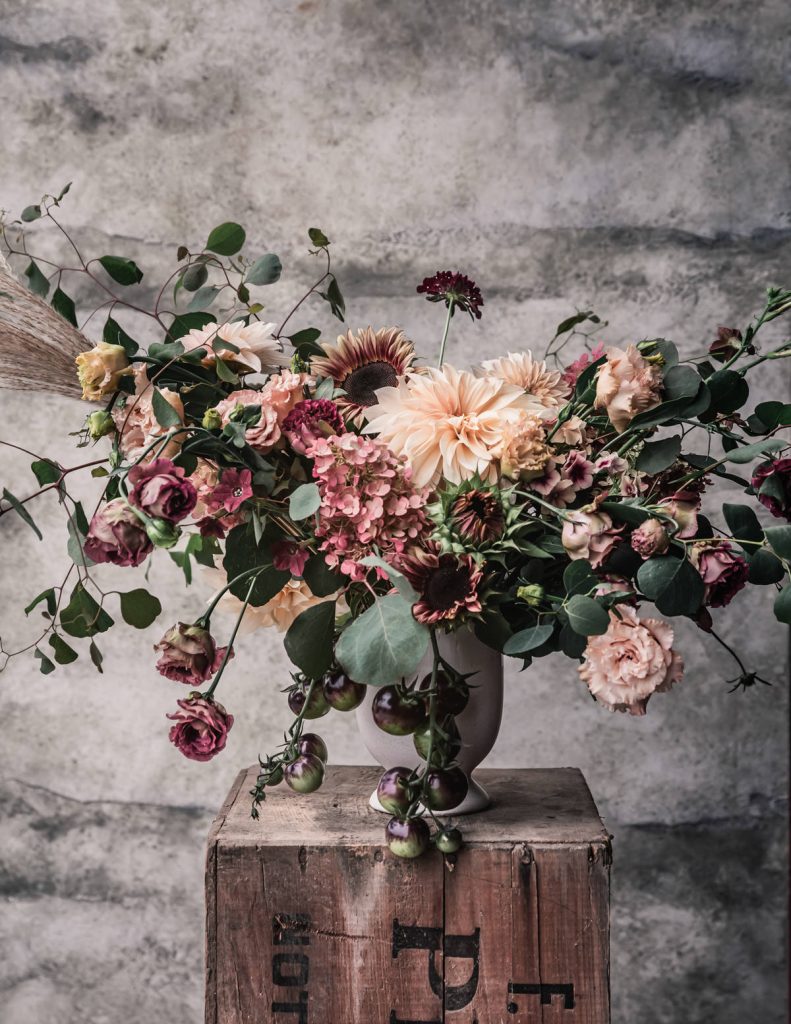
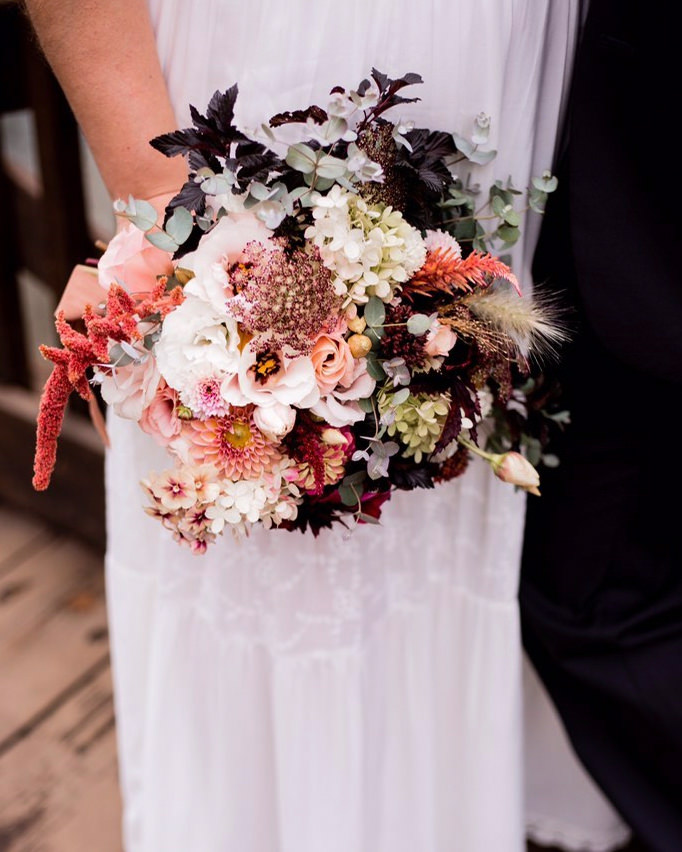
Wrap Up
OK, my friend, that is IT for this Plant Profile. What do you think? Did you find some useful nuggets? Be sure to save a PDF copy using the buttons below, so you can always refer back to it.
Have any questions or something you want to share with me or others? I know I say this ad nauseam, but I truly believe in the power of the collective and that we all have something unique and powerful to share, so please leave a question or share a comment below. We’re all better for it, and I thank you in advance!
Cheers pal!
cLICK FOR Comments +